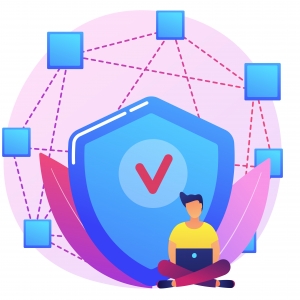In today's increasingly interconnected world, organizations must be vigilant not only against external threats but also against potential risks from within their own ranks. Insider risk management is a critical component of any comprehensive cybersecurity strategy. This blog will explore the concept of insider risk, its potential consequences, and effective strategies for mitigating it.
Insider risk, in a cybersecurity context, refers to the threats that originate from employees, contractors, or partners with access to an organization's systems, data, or facilities. These threats can manifest in various ways, from accidental data leaks to deliberate malicious actions. The consequences of insider risks can be severe, including financial losses, reputational damage, and legal ramifications.
To manage insider risks effectively, organizations should implement the following strategies:
-
Employee Training: Start by educating employees about cybersecurity best practices and the potential consequences of insider risks. Regular training and awareness programs can help build a security-conscious culture.
-
Access Control: Limit access to sensitive data and systems to only those who require it to perform their job. Implement strong authentication measures and monitor access to detect unusual or suspicious activities.
-
Data Loss Prevention (DLP) Solutions: Deploy DLP tools to monitor and protect sensitive data. These solutions can help prevent accidental data leaks and detect malicious intent.
-
Behavior Analytics: Use behavior analytics tools to monitor user activities and identify anomalies. These systems can help detect unauthorized access or unusual behavior patterns.
-
Incident Response Plan: Develop a robust incident response plan to swiftly address any insider threats that do occur. This plan should include procedures for investigation, containment, and mitigation.
-
Regular Audits: Conduct regular audits of access permissions, data usage, and user activities to ensure compliance with security policies and regulations.
-
Trust, But Verify: Maintain a balance between trust and verification. Trust your employees but verify their actions to ensure security.
Insider risk management is an ongoing process that requires vigilance and adaptation as threats evolve. By implementing these strategies, organizations can better protect themselves from insider risks and safeguard their valuable assets and sensitive information. Remember, in today's digital landscape, it's not just external threats that pose a danger; the risk may be lurking within your organization itself.






